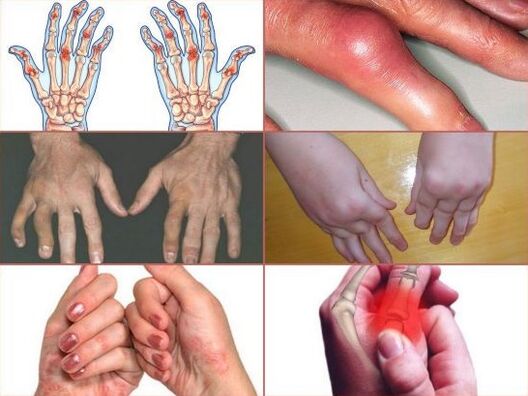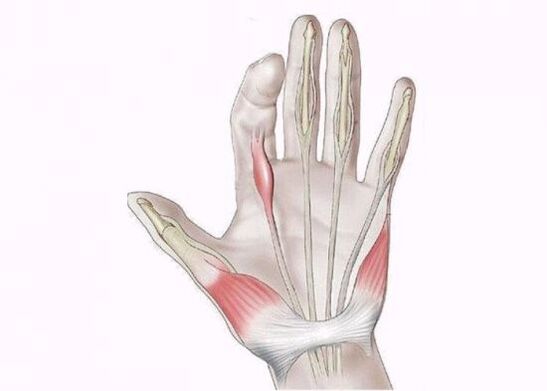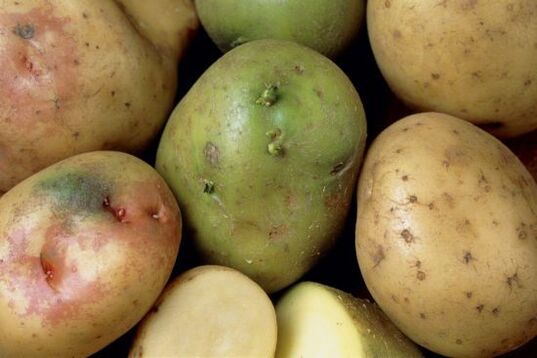
The hand is the most complex area of the upper limb in its structure. It consists of many bones, closely grouped. Bones are connected through 30 different joints - interphalangeal, metacarpophalangeal, carpometacarpal and radiocarpal.
According to statistics, hands are more often injured than other parts of the body. Multiple injuries account for, according to various sources, from 30 to 50% of total musculoskeletal system injuries and do not tend to decrease.
Therefore, of all the causes of pain in the fingers of the hand, the main one is trauma. In second place in terms of prevalence are connective tissue diseases - rheumatoid arthritis, systemic scleroderma and lupus erythematosus, psoriasis. More rarely, pain in the finger joints is caused by violations of metabolic processes in gout, osteoarthritis.
symptoms
Signs of non-traumatic injury that may indicate the presence of joint pathology are as follows:
- pain syndrome, which is permanent or undulating;
- pain when pressing and bending fingers;
- swelling and redness of the skin over the joints;
- stiffness, stiffness during movement;
- deterioration of fine motor skills;
- creaking, throbbing and crackling during finger flexion;
- formation of subcutaneous nodules, not painful to the touch;
- thickening of the skin at the folds;
- changes in joint configuration;
- increased body temperature.
Rheumatoid arthritis
Arthritis of rheumatoid origin most often affects the fingers, and simultaneously in the right and left hands. This systemic disease is characterized by damage in the immune system, where T-lymphocytes begin to attack their own cells. Synovial membrane cells lining the joint capsule from the inside actively produce rheumatoid factors: pathological antibodies are protective protein molecules.
Next, rheumatoid factor enters the bloodstream and binds normal antibodies. As a result, immune complexes are formed that settle in blood vessels and tissues. They are absorbed by the cells of the immune system - neutrophils and phagocytes, releasing substances that damage the surrounding structure.
It is known that this is how inflammation develops in rheumatoid arthritis. However, scientists have not been able to determine the cause of this process. According to the latest research in the field, the cause of connective tissue damage is cytokines - signaling to immune cells. Japanese experts concluded that the study of this type of cell will help to find effective treatment methods.
With rheumatoid arthritis, any finger can be sore - the index, middle, ring or little finger, but the lesion will always be bilateral. If one or more fingers on the left hand ache, then the same finger on the right hand begins to ache almost immediately.
The phalanges in the joint area swell and squeeze, due to the accumulation of fluid, they do not bend well, especially in the morning. Morning stiffness can last up to 1 hour. Over time, the development of arthritis leads to the replacement of smooth cartilage tissue with fibrous structures, which interfere with the free movement of bone in the joints.
Gradually, the joint changes shape, due to changes in the position of the articular elements, the pain increases. With the long course of the disease, a small, painless formation appears near the joint on the back of the hand - a rheumatoid nodule.
Psoriatic arthritis
The symptoms of this disease can resemble rheumatoid arthritis and occur on the background of dermatological pathology - psoriasis. In most cases, the skin rash appears first, and after a while the finger joints ache.
Simultaneous manifestations of skin and joint lesions are also possible; in 20 out of a hundred patients, the joints start to ache earlier. Why psoriasis occurs is unknown. Presumably, it can be provoked by genetic predisposition, immune system damage and infection. The average age of the patients was 40 years.

Psoriatic arthritis can begin, like rheumatoid arthritis, with general weakness and malaise, or it can manifest itself with an unexpectedly sharp sensation of pain. Not only the fingers can be affected, but also the small joints of the feet, knees and shoulders. Involvement in pathological processes can be unilateral and symmetrical.
The pain syndrome is most pronounced at night and during rest. In the morning there is stiffness, during the day and with movement the pain decreases. Often, there are lesions on one side-on the left or on the right, and, as a rule, it does not hurt one, but 2-4 joints (oligo-arthritis).
After a long rest, the fingers become very swollen and become like sausages, the flexor muscle tendons become inflamed, the skin above the joints acquires a purple-blue color. The following symptoms indicate the presence of psoriasis and psoriatic arthritis:
- scaly red or pink spots on the head, elbows, knees and thighs - they can be single or cover large areas of skin;
- characteristic holes on the skin of the hands, similar to smallpox, pigmentation on the fingers or toes;
- psoriatic plaques are hyperemic, edematous and possibly itchy;
- pain in the joints is permanent and does not disappear during the day;
- hand mobility and functionality are significantly reduced.
The psoriasis form of arthropathy is one of the most severe. Usually, joint deformation is not observed, but if this occurs, then joint articular surface fusion (ankylosis) is not excluded.
The danger of this disease is that large joints and spinal spaces are gradually involved in pathological processes. Osteoporosis of the bones develops, the joints are destroyed, so psoriatic arthritis often leads to disability.
Osteoarthritis
With arthrosis, the process of cartilage tissue formation that covers the articular surface of the bone is disrupted. This is facilitated by both external and internal factors - injury, high physical activity, hereditary tendencies and metabolic disorders.
Depending on the cause, arthrosis can be primary and secondary, developing on the background of endocrine or metabolic diseases. Often, arthrosis affects the large joints of the lower legs - knees, hips and ankles - because they bear the main load when walking and standing. The upper body is less frequently affected.
When the fingers are sore as a result of prolonged physical exertion, and after resting the pain disappears, the development of arthrosis is not excluded.
Over time, other symptoms appear:
- increased pain when clenching fists or tensing fingers;
- increased size of diseased joints;
- stiffness in the morning, requiring "development" of the fingers for 10-15 minutes or longer;
- characteristic of crackling when bending the finger.
Osteoarthritis develops slowly and may not be a concern for years or even decades. However, in some cases, there is a rapid increase in symptoms and a sharp deterioration in the condition. If at first the pain occurs only during exercise, then it does not disappear even after resting.
Due to the marginal growth of the bones that make up the joint, characteristic pineal formation appears. Closer to the palm of the hand, at the proximal phalangeal joint, Bouchard nodules form. Next to the distal interphalangeal joint, located near the nail, is a Heberden nodule.
Ligamentitis stenosing
Stenosing ligamentitis affects the ligament-tendon apparatus of the hand and is indicated by blocking one of the fingers in a flexion or extension position. The pathological process is caused by excessive load or excessive pressure on the ligament area, so the disease occurs among people engaged in manual labor - builders, welders, seamstresses and kitchen workers. In children, stenosing ligamentitis is very rare and only affects the thumb.

The main symptom of this disease is the "jumping" of the finger during the connection, accompanied by a single click. In the future, the "snap" disappears, and the finger remains immobile, turning into a flexor or extensor contracture.
In the early stages, there is pain when pressing on the palm of the hand at the base of the finger and difficulty with flexion / extension, especially pronounced in the morning. With a long course of ligamentitis, you can move your fingers only with the help of the other hand, and after "knocking" there is a pain that spreads not only to the palms, but also to the forearms.
Which doctor to contact
For pain in the fingers, you can first contact a therapist who, if necessary, will refer you to a narrow specialist - a traumatologist, rheumatologist, hematologist, neurologist or surgeon. Clinical, radiation and laboratory research methods are used for diagnosis.
To find out the cause of the pain, farrowing (history taking) and physical examination are done, after which x-ray or tomography, blood and urine tests are prescribed.
Treatment
How to be treated and what to do next depends on the results of the exam. Task number 1 is to relieve pain and inflammation: for this, drugs from the NSAID group are prescribed - non -steroidal anti -inflammatory drugs. Currently, more and more frequently used new generation means, NSAIDs of selective action.
Selective NSAIDs act selectively and have less toxic effects on the body, they can be taken for a long period of time. If the pain syndrome is moderate or mild, topical agents are used - ointments and anti -inflammatory gels.
Treatment of rheumatoid arthritis includes basic and biological products, steroid hormones. These drugs suppress the immune system, thereby reducing the intensity of the inflammatory process.
The same immunosuppressive drugs are prescribed if the joints are sore on the background of psoriatic arthritis. Methods such as plasmapheresis, hemosorption and photochemotherapy are used to reduce disease activity, prolong the remission period and shorten the duration of drug therapy.
How to treat joint arthrosis depends on the stage of the disease. At stages 1-2, it is possible to delay cartilage destruction significantly by taking chondroprotectors. Effective physiotherapy, which enhances the effect of drugs and stimulates the recovery process.
For the treatment of arthrosis can be prescribed:
- magnetotherapy;
- electrophoresis;
- laser;
- ultrasound;
- cryotherapy - exposure to the joints with liquid nitrogen;
- balneotherapy - bath with mineral water;
- hirudotherapy - during treatment with leeches, substances that promote cartilage regrowth (hirudin, vitamins and hormones) enter the joints.
Therapeutic tactics for stenosing ligamentitis are determined taking into account the stage, the presence of provoking factors and the age of the patient. If damage to the ligaments is minimal, it is recommended to reduce the load on the hand, if necessary, the hand is repaired with an orthosis or splint. For pain, anti-inflammatory drugs and electrophoresis with hyaluronidase are prescribed.
The second stage of treatment begins with conservative methods. Lack of effect for several months is an indication for surgery to cut the damaged ligament. In patients with stage three, conservative therapy is performed very rarely, in most cases surgery is performed as planned.
Reference: because of the high risk of recurrence, it is very important to change your profession if it involves a burden on the hands.
Restoration of the people
Means prepared according to folk recipes can not be the main method of treatment, because it is not effective enough. However, as adjunctive therapy, such medications will help relieve pain and enhance the effects of the medications.

Mix some bay leaves with juniper needles, add a little butter and massage your hands with the resulting ointment.
At night, you can make a compress of crushed lime, kefir, fermented baked milk or boiled oats.
To compress, green potatoes are used, which must be chopped directly in the skin in a meat grinder or on a grater. Then dip the potato porridge into hot water and heat to 39-40 °. After that, put it in a linen bag and apply on the sore joint for half an hour. This procedure can be done several times a day.
Application of paraffin relieves pain well, if you put your hands in melted paraffin for 10 minutes, and then hold them in any herbal decoction for 15-20 minutes. You can not be afraid of burns, because paraffin melts at a temperature of not more than 65 °. To achieve the effect, 2-3 strokes a week is enough.
Compressing with Bischofite helps speed up tissue healing. Due to its composition, this natural mineral relieves pain and inflammation, restores joint mobility. Regular use of Bishofit maintains muscle tone and connective tissue.
Compressed with Bischofite is recommended to do as follows: warm the joints with a heating pad or hold them in a warm bath, then rub Bischofite, previously diluted with water 1: 1, into the skin of the hands. Rubbing should be continued for a few minutes, after which a cloth or gauze soaked in the solution is rubbed on the sore spot. From above, the compress is covered with polyethylene and insulated. Compressing with Bischofite is performed at night, in the morning hands are washed with warm water. This procedure is performed daily for three weeks.
Reference: compresses with Bischofite can be placed simultaneously on no more than three joints.
Most important
To avoid or reduce the intensity of the pain that has appeared, you need to keep the brush warm and not expose it to hypothermia. Work that requires performing the same type of movement is best done alternately, and when using a vibrating tool, use gloves and support the working brush with the other hand. When lifting and carrying heavy loads, the weight of the load should be evenly distributed on both limbs. You can also maintain healthy joints with the help of proper nutrition, which must contain foods that contain calcium and omega-3 fatty acids.

















































